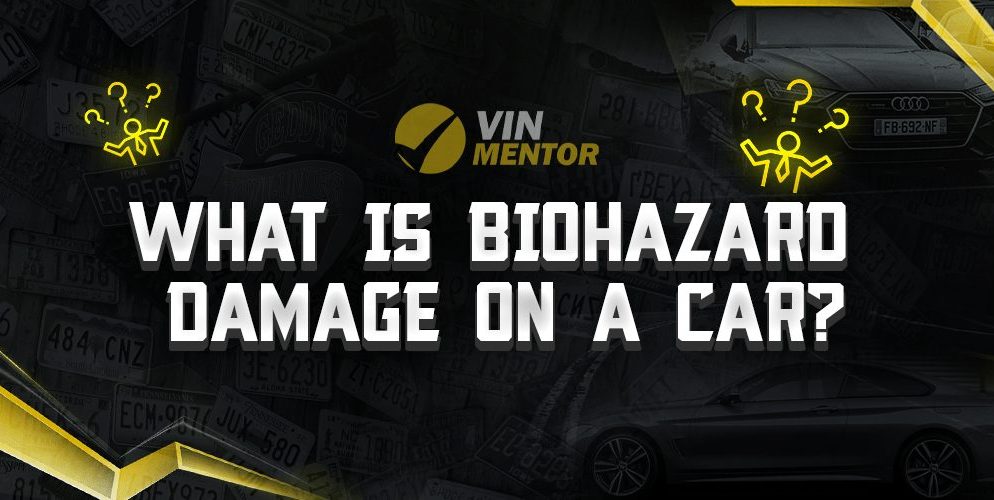

Have you ever heard of biohazard damage on a car? It sounds ominous, but what exactly does it mean? The term “biohazard” is used to describe any material that poses a threat to human health or the environment. When it comes to a car, biohazard damage refers to any substance that is potentially hazardous and may pose a risk to the health of those who come into contact with it. In this article, we will take a closer look at biohazard damage on a car and what you can do if you encounter it.
Key Takeaways
- Biohazard damage on a car refers to any hazardous material that may be present on or inside the vehicle.
- Exposure to biohazardous substances can be harmful to human health.
- It is important to properly identify and handle biohazard damage to prevent the spread of contamination.
- Professional cleanup and decontamination may be necessary to ensure the safety of the vehicle and its occupants.
What Constitutes Biohazard Damage on a Car?
Biohazard damage on a car can take many forms, including bodily fluids, chemicals, and other hazardous materials. These substances may be present on the exterior or interior of the vehicle and can pose a serious risk to human health if not properly handled.
Types of Biohazard Damage
- Bodily fluids: These can include blood, vomit, and feces, and can be present in or on the car. Exposure to bodily fluids can lead to the transmission of diseases and infections, making it important to handle these materials with care.
- Chemicals: Chemicals that are potentially hazardous to human health can also be present on a car. These can include substances such as gasoline, antifreeze, and battery acid. Exposure to these chemicals can lead to serious health issues, such as chemical burns or respiratory problems.
- Hazardous waste: In some cases, a car may contain hazardous waste, such as asbestos or lead paint. Exposure to these materials can cause long-term health problems, making it essential to properly identify and handle them.
Handling Biohazard Damage
Properly handling biohazard damage is crucial to prevent the spread of contamination and ensure the safety of those who come into contact with the vehicle. Here are some steps to take if you encounter biohazard damage on a car:
- Identify the substance: The first step is to properly identify the substance and determine whether it is potentially hazardous. If you are unsure, it is best to err on the side of caution and assume that the substance is dangerous.
- Take precautions: When handling biohazardous materials, it is important to take precautions to protect yourself from exposure. This may include wearing protective clothing, gloves, and a face mask.
- Clean up the area: If possible, clean up the affected area as soon as possible to prevent the spread of contamination. Be sure to use appropriate cleaning agents and dispose of any contaminated materials properly.
- Seek professional help: In some cases, it may be necessary to seek professional help to properly clean and decontaminate the vehicle. Professional cleaners have the tools and expertise necessary to safely remove biohazardous materials and ensure the safety of the vehicle and its occupants.
Conclusion
Biohazard damage on a car can be a serious issue, posing a risk to human health and the environment. Proper identification and handling of these materials is essential to prevent the spread of contamination and ensure the safety of those who come into contact with the vehicle. If you are unsure whether a car has been exposed to biohazardous materials, it is always best to err on the side of caution and seek professional help to properly clean and decontaminate the vehicle. You can also do a VIN check, choosing from our recommended list of the best VIN Check Websites, to ensure that the car has not been involved in any accidents or incidents that may have exposed it to biohazardous materials.
FAQ
Is biohazard damage on a car a common occurrence?
Biohazard damage on a car is relatively rare but can happen in certain situations. It typically occurs in vehicles involved in accidents, crime scenes, or incidents where hazardous materials are present.
How can I identify biohazard damage on a car?
Biohazard damage on a car can be identified by the presence of bodily fluids, strong chemical odors, or visible signs of hazardous materials such as spilled chemicals or waste. It is important to exercise caution and seek professional help if you suspect biohazard damage.
What are the potential health risks of coming into contact with biohazardous materials on a car?
Exposure to biohazardous materials on a car can pose various health risks, including the transmission of diseases and infections from bodily fluids, chemical burns or respiratory problems from exposure to hazardous chemicals, or long-term health problems from exposure to hazardous waste.
Can I clean biohazard damage on a car myself?
While it is possible to clean biohazard damage on a car yourself, it is highly recommended to seek professional help. Professional cleaners have the necessary expertise, equipment, and protective gear to safely handle and decontaminate the vehicle, ensuring thorough cleanup and minimizing health risks.
How can I prevent the spread of contamination if I encounter biohazard damage on a car?
To prevent the spread of contamination, it is important to take precautions such as wearing protective clothing, gloves, and a face mask when handling biohazardous materials. Promptly cleaning up the affected area with appropriate cleaning agents and disposing of contaminated materials properly can also help minimize the risk of contamination. Seeking professional help is advisable for comprehensive decontamination.












